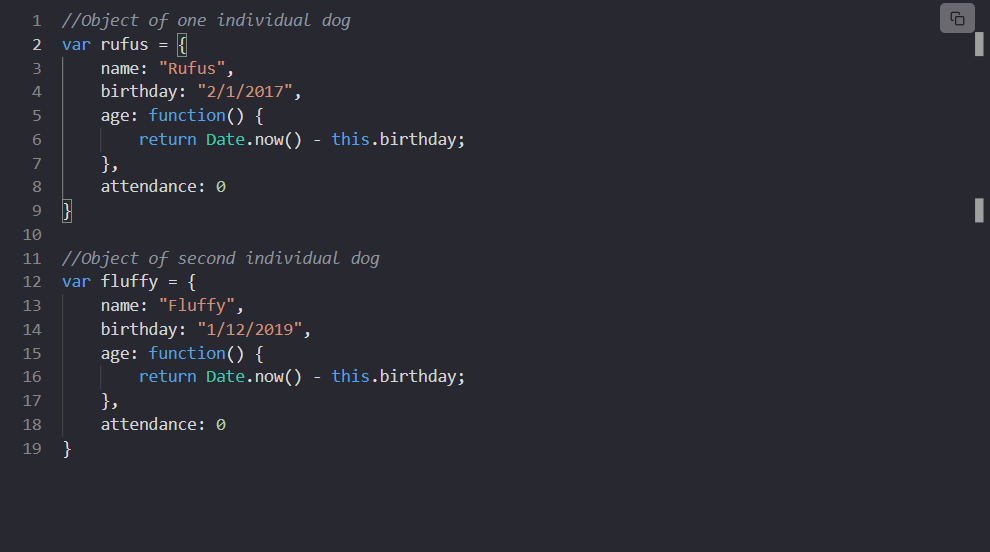Object-oriented programming (OOP) is a fundamental programming paradigm used by nearly every developer at some point in their career. OOP is the most popular programming paradigm used for software development and is taught as the standard way to code for most of a programmer’s educational career. Another popular programming paradigm is functional programming, but we won’t get into that right now.
Today we will break down the basics of what makes a program object-oriented so that you can start to utilize this paradigm in your algorithms, projects, and interviews.
Now, let’s dive into these OOP concepts and tutorials!
Here’s what will be covered:
What is Object-Oriented Programming?
Object-Oriented Programming (OOP) is a programming paradigm in computer science that relies on the concept of classes and objects. It is used to structure a software program into simple, reusable pieces of code blueprints (usually called classes), which are used to create individual instances of objects. There are many object-oriented programming languages, including JavaScript, C++, Java, and Python.
OOP languages are not necessarily restricted to the object-oriented programming paradigm. Some languages, such as JavaScript, Python, and PHP, all allow for both procedural and object-oriented programming styles.
A class is an abstract blueprint that creates more specific, concrete objects. Classes often represent broad categories, like Car or Dog that share attributes. These classes define what attributes an instance of this type will have, like color, but not the value of those attributes for a specific object.
Classes can also contain functions called methods that are available only to objects of that type. These functions are defined within the class and perform some action helpful to that specific object type.
For example, our
Carclass may have arepaintmethod that changes thecolorattribute of our car. This function is only helpful to objects of typeCar, so we declare it within theCarclass, thus making it a method.
Class templates are used as a blueprint to create individual objects. These represent specific examples of the abstract class, like myCar or goldenRetriever. Each object can have unique values to the properties defined in the class.
For example, say we created a class,
Car, to contain all the properties a car must have,color,brand, andmodel. We then create an instance of aCartype object,myCarto represent my specific car.We could then set the value of the properties defined in the class to describe my car without affecting other objects or the class template.
We can then reuse this class to represent any number of cars.

Benefits of OOP for software engineering
- OOP models complex things as reproducible, simple structures
- Reusable, OOP objects can be used across programs
- Polymorphism allows for class-specific behavior
- Easier to debug, classes often contain all applicable information to them
- Securely protects sensitive information through encapsulation
How to structure OOP programs
Let’s take a real-world problem and conceptually design an OOP software program.
Imagine running a dog-sitting camp with hundreds of pets where you keep track of the names, ages, and days attended for each pet.
How would you design simple, reusable software to model the dogs?
With hundreds of dogs, it would be inefficient to write unique entries for each dog because you would be writing a lot of redundant code. Below we see what that might look like with objects rufus and fluffy.
As you can see above, there is a lot of duplicated code between both objects. The age() function appears in each object. Since we want the same information for each dog, we can use objects and classes instead.
Grouping related information together to form a class structure makes the code shorter and easier to maintain.
In the dogsitting example, here’s how a programmer could think about organizing an OOP:
- Create a class for all dogs as a blueprint of information and behaviors (methods) that all dogs will have, regardless of type. This is also known as the parent class.
- Create subclasses to represent different subcategories of dogs under the main blueprint. These are also referred to as child classes.
- Add unique attributes and behaviors to the child classes to represent differences
- Create objects from the child class that represent dogs within that subgroup
The diagram below represents how to design an OOP program by grouping the related data and behaviors together to form a simple template and then creating subgroups for specialized data and behavior.
The Dog class is a generic template containing only the structure of data and behaviors common to all dogs as attributes.
We then create two child classes of Dog, HerdingDog and TrackingDog. These have the inherited behaviors of Dog (bark()) but also behavior unique to dogs of that subtype.
Finally, we create objects of the HerdingDog type to represent the individual dogs Fluffy and Maisel.
We can also create objects like Rufus that fit under the broad class of Dog but do not fit under either HerdingDog or TrackingDog.

